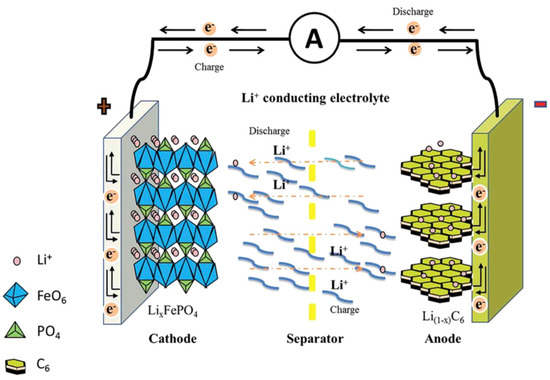

"This type of chemical reaction is very efficient however, it only transfers a single electron, so the cathode capacity is limited. "The materials normally used in lithium-ion batteries are based on intercalation chemistry," explained Enyuan Hu, a chemist at Brookhaven and one of the lead authors of the paper. Researchers have been interested in using chemical compounds like FeF 3 in lithium-ion batteries because they offer inherently higher capacities than traditional cathode materials. Scientists at UMD synthesized a new cathode material, a modified and engineered form of iron trifluoride (FeF 3), which is composed of cost-effective and environmentally benign elements – iron and fluorine. Cathode materials are always the bottleneck for further improving the energy density of lithium-ion batteries." "Compared to the large capacity of the commercial graphite anodes used in lithium-ion batteries, the capacity of the cathodes is far more limited. "Lithium-ion batteries consist of an anode and a cathode," said Xiulin Fan, a scientist at UMD and one of the lead authors of the paper. The scientists report their research in a paper in Nature Communications. Now, researchers have made significant progress toward achieving that goal.Ī collaboration led by scientists at the University of Maryland (UMD), the US Department of Energy's (DOE) Brookhaven National Laboratory and the US Army Research Lab has developed and studied a new cathode material that could triple the energy density of lithium-ion battery electrodes. Increasing the energy density of lithium-ion batteries could facilitate the development of advanced technologies with long-lasting batteries, as well as the widespread use of wind and solar energy.

Photo: Brookhaven National Laboratory.Īs the demand for smartphones, electric vehicles and renewable energy continues to rise, scientists are searching for ways to improve lithium-ion batteries – the most common type of battery found in home electronics and a promising solution for grid-scale energy storage. Brookhaven scientists Enyuan Hu and Sooyeon Hwang at the Center for Functional Nanomaterial's TEM facility, where the researchers viewed the new cathode material at a resolution of 0.1nm.


 0 kommentar(er)
0 kommentar(er)
